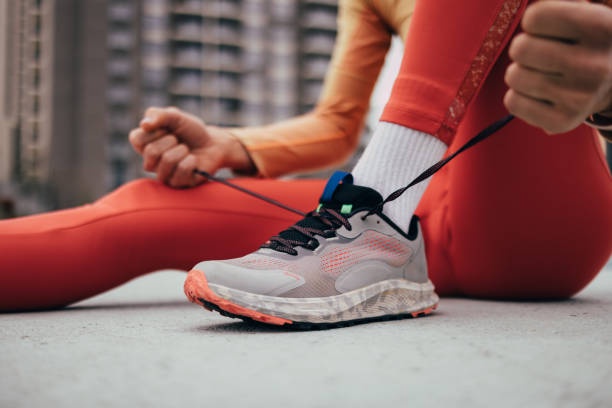When it comes to footwear, one often overlooks a crucial component that holds everything together - bootlaces, also known as shoelaces. These seemingly mundane strands of material play a vital role in keeping our shoes snug, secure, and stylish. In this comprehensive guide, we delve into the world of bootlaces, exploring their history, evolution, types, materials, and maintenance. So, lace up your shoes, and let's embark on a journey through the fascinating realm of bootlaces.
A Brief History of Bootlaces
Bootlaces have been an integral part of footwear for centuries, dating back to ancient civilizations. The earliest forms were likely made from natural materials such as leather, hemp, or plant fibers. As footwear evolved, so did the need for more durable and versatile laces. In the 20th century, with the advent of mass production and technological advancements, bootlaces became more standardized and accessible to the masses. Today, they come in a myriad of styles, colors, and designs, catering to diverse fashion preferences and functional needs.
The Evolution of Shoelaces
Over time, shoelaces have undergone significant transformations in terms of materials and construction. Traditional laces were typically made from natural fibers like cotton or leather. However, modern manufacturing techniques have introduced synthetic materials such as nylon, polyester, and even elasticized blends, offering increased durability, flexibility, and resistance to wear and tear. Moreover, innovations like wax-coating and moisture-wicking properties have enhanced their performance in various weather conditions, making them indispensable for outdoor enthusiasts and athletes alike.
The Cultural Significance of Bootlaces
Beyond their practical utility, bootlaces hold symbolic and cultural significance in many societies. In some cultures, shoes and their laces are imbued with superstitions or religious beliefs. For example, in certain Asian cultures, it is customary to remove one's shoes before entering a home as a sign of respect, highlighting the importance of maintaining clean and intact shoelaces. Furthermore, bootlaces have been used as a form of self-expression and identity, with individuals choosing specific colors or styles to reflect their personality, interests, or affiliations.
Exploring Different Types of Bootlaces
Bootlaces come in a variety of styles, each tailored to specific types of footwear and activities. Here are some of the most common types:
Round Laces
Round laces are the classic choice for most casual and dress shoes. They feature a cylindrical shape and are available in various thicknesses, making them suitable for different eyelet sizes and shoe styles. Round laces provide a secure knot and a clean, streamlined look, making them a versatile option for everyday wear.
Flat Laces
Flat laces are popular in athletic shoes and sneakers, offering a wider surface area for better grip and stability. They lie flat against the shoe's surface, providing a sleek and modern aesthetic. Flat laces are often made from synthetic materials like nylon or polyester, which offer enhanced strength and resistance to stretching.
Waxed Laces
Waxed laces are coated with a layer of wax or resin, providing added durability and water resistance. This makes them ideal for outdoor activities and inclement weather conditions, where moisture and abrasion can degrade traditional laces. Waxed laces also hold their shape better and are less prone to unraveling, ensuring a secure fit throughout the day.
Elastic Laces
Elastic laces, also known as "no-tie" or "lock" laces, are designed for convenience and ease of use. Instead of tying a knot, users simply adjust the tension and secure the laces with a locking mechanism. Elastic laces are particularly popular among athletes and individuals with mobility issues, as they allow for quick and effortless shoe adjustments without sacrificing security or comfort.
Maintaining Your Bootlaces for Longevity
Proper care and maintenance can extend the lifespan of your bootlaces and keep them looking their best. Here are some tips to ensure your laces stay in top condition:
- Regular Cleaning: Remove dirt, debris, and stains from your laces by gently scrubbing them with a mild soap solution and a soft-bristled brush. Allow them to air dry completely before re-lacing your shoes.
- Avoiding Excessive Force: When tying your shoes, avoid pulling too tightly on the laces, as this can cause them to stretch or break prematurely. Instead, use gentle yet firm pressure to secure the knot.
- Rotating Laces: To prevent uneven wear, rotate between multiple pairs of shoes and laces, especially if you wear the same footwear frequently. This allows each pair to air out and recover between uses.
- Replacing When Necessary: Inspect your laces regularly for signs of fraying, unraveling, or damage. If you notice any issues, replace them promptly to maintain optimal performance and appearance.
Conclusion
Bootlaces may seem like a minor detail in the world of footwear, but their importance cannot be overstated. From their humble beginnings in ancient civilizations to their modern-day iterations crafted from high-tech materials, bootlaces have stood the test of time as essential accessories for keeping our shoes secure and stylish. By understanding the history, evolution, types, and maintenance of bootlaces, we gain a deeper appreciation for these small yet significant components that play a big role in our daily lives. So, the next time you lace up your shoes, take a moment to appreciate the simple yet indispensable magic of bootlaces.


No comments yet